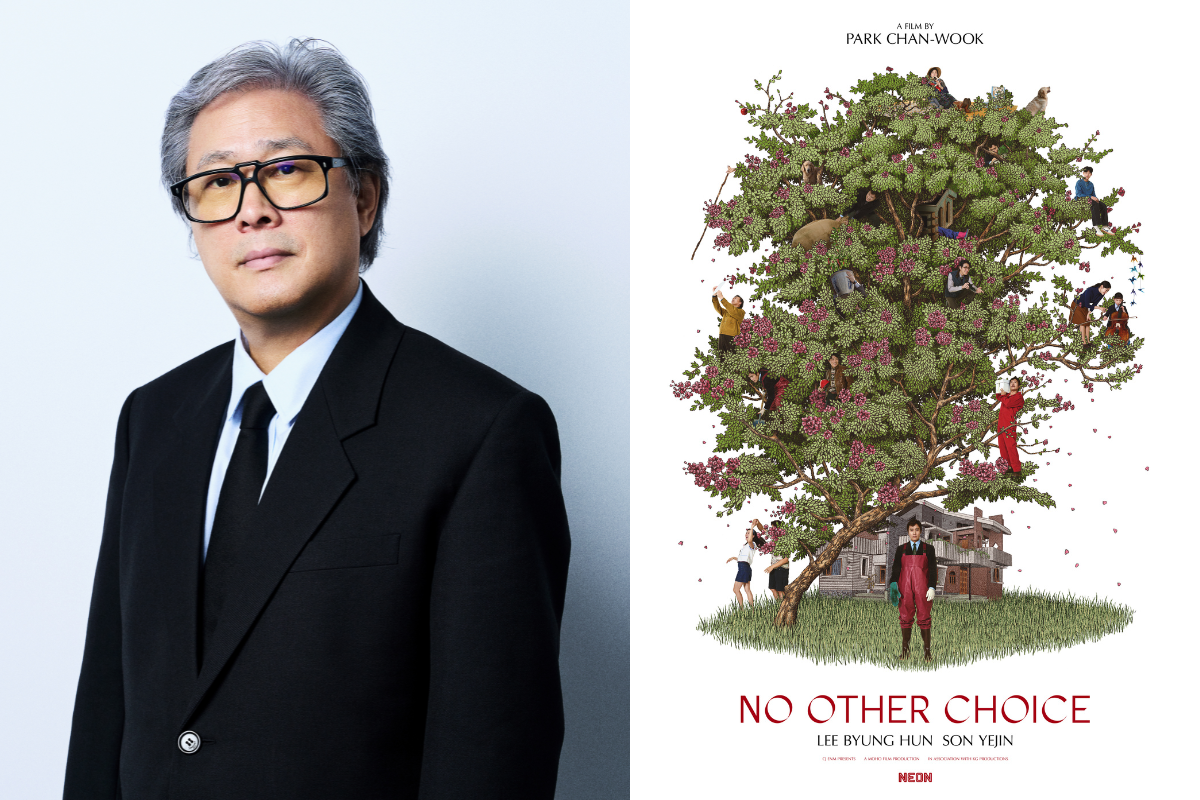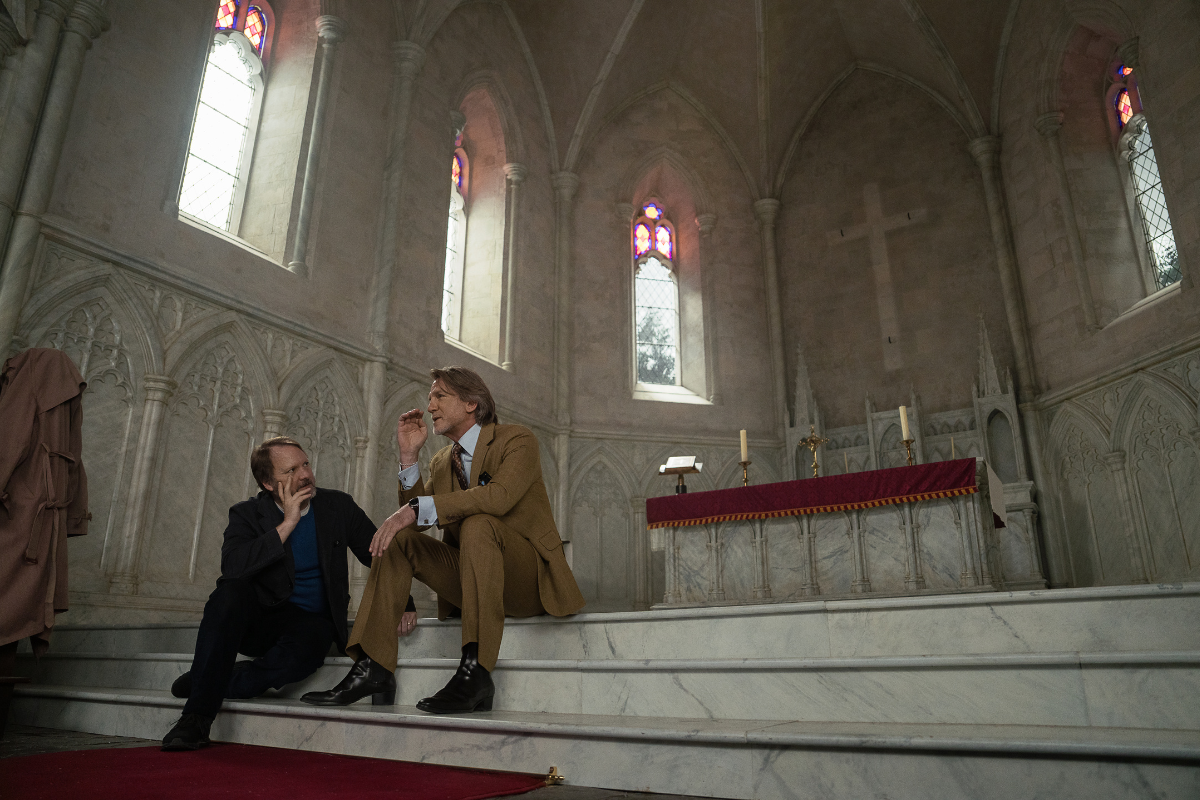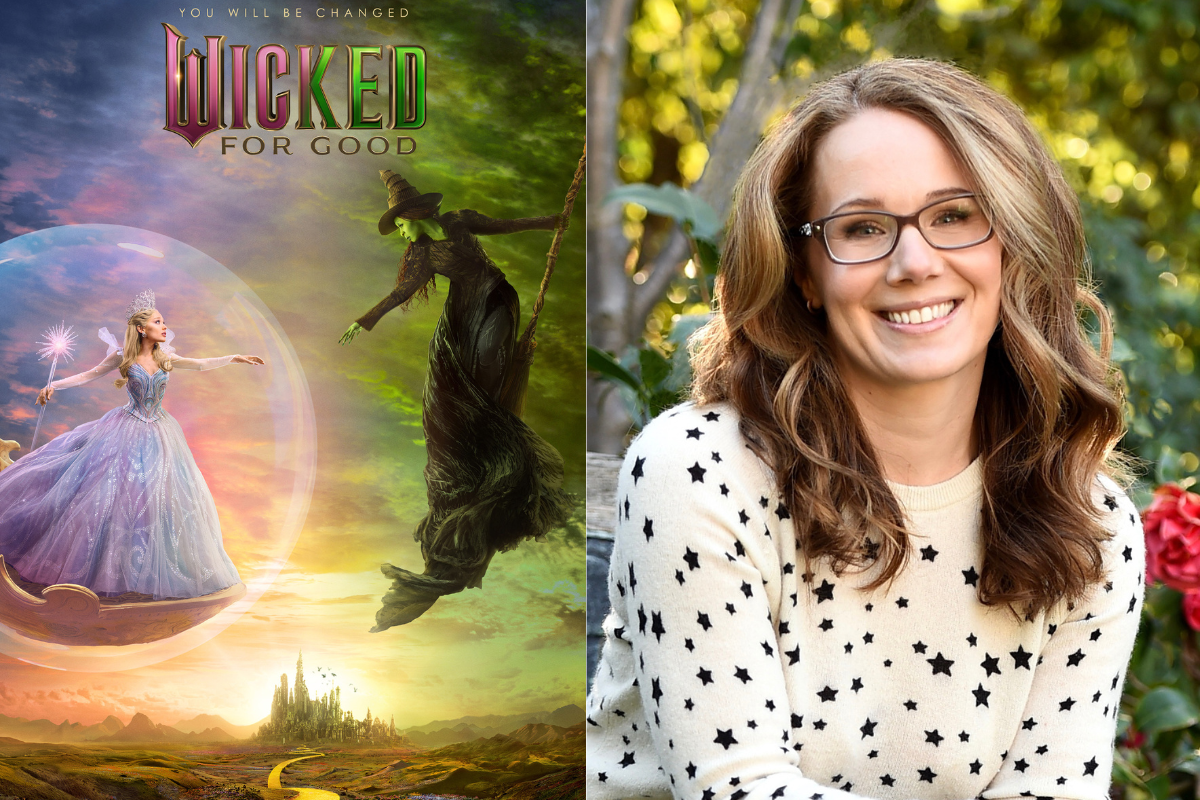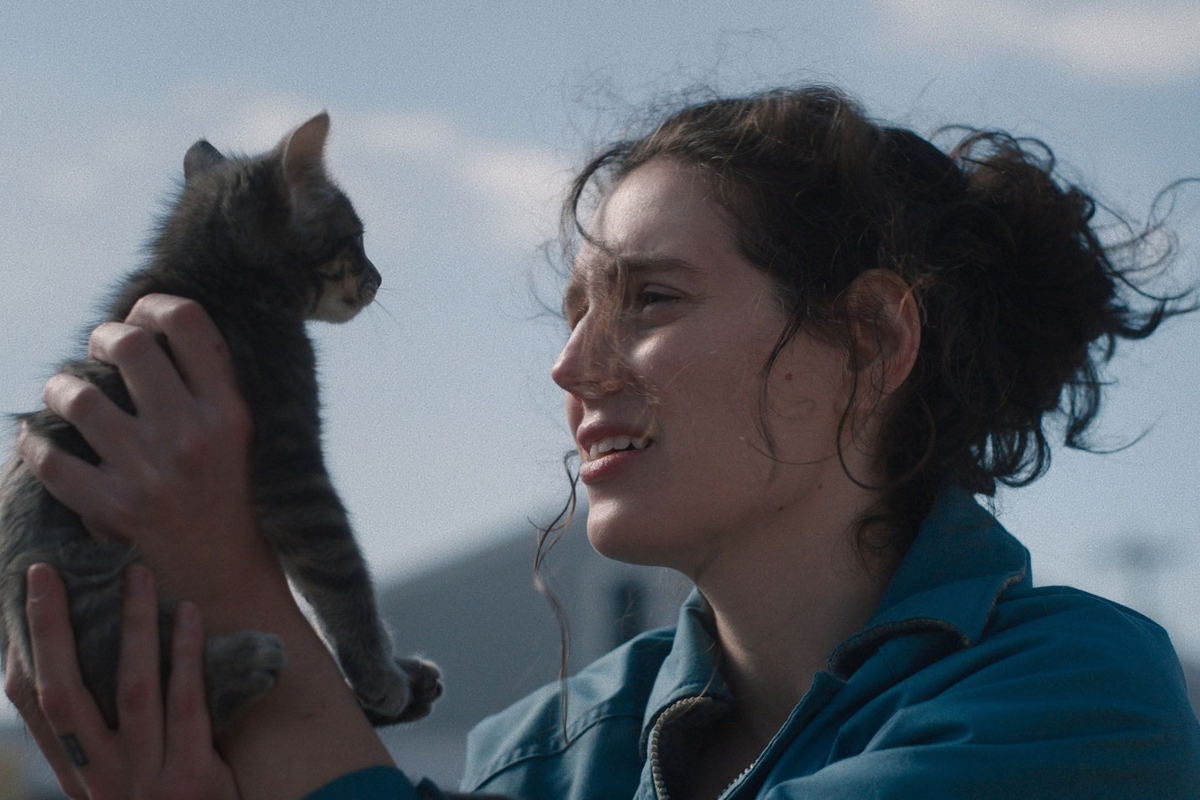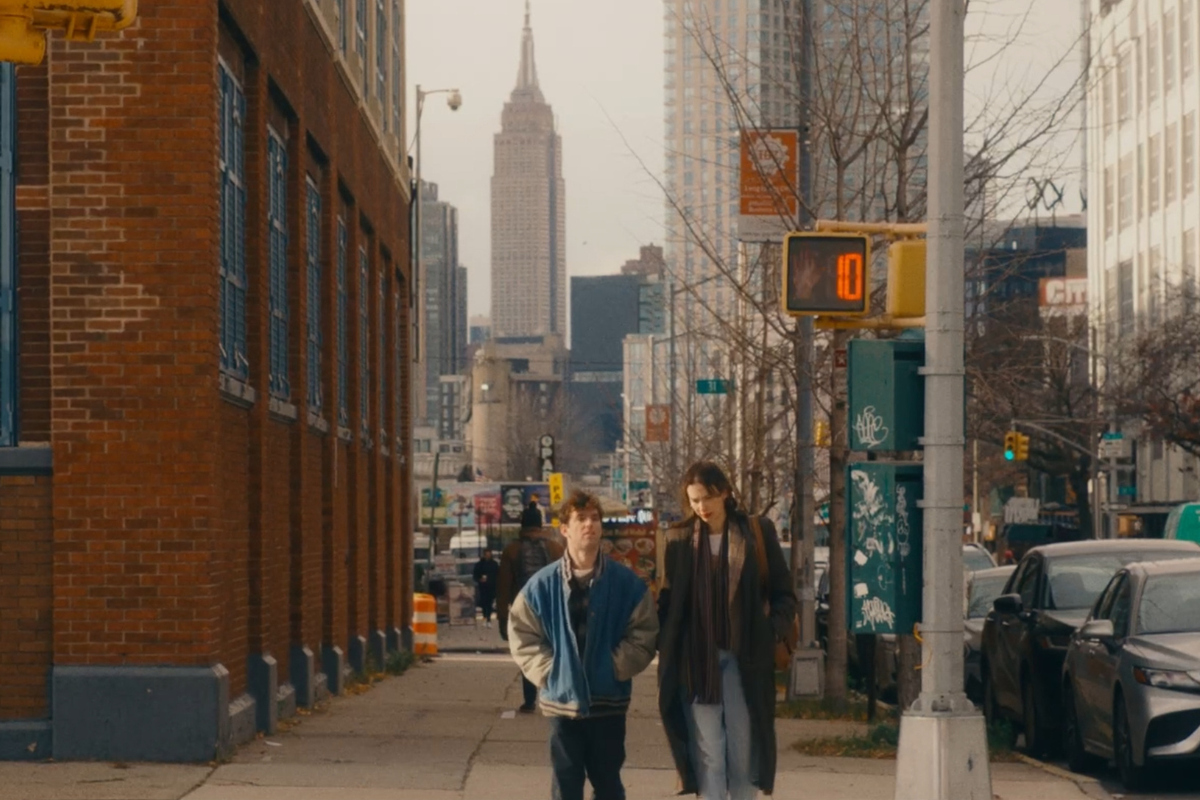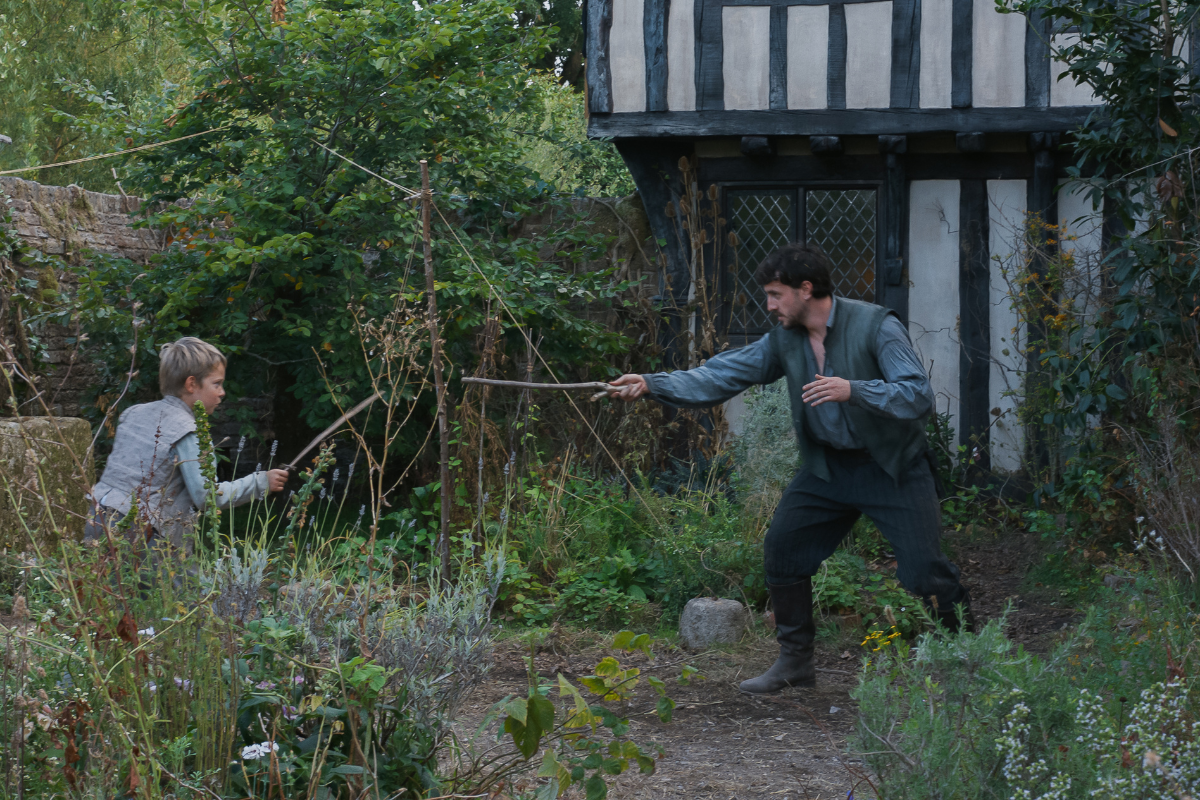A Motivational Twist on the Hero’s Journey with ‘South of Heaven’ Writer-Director Aharon Keshales
Script’s Editor Sadie Dean interviews ‘South of Heaven’ writer-director Aharon Keshales about his filmmaking journey, developing the story from a personal perspective, world-building with his actors, and his collaboration process with his director of photography to create a specific color palette to set the cinematic tone of the story.
After serving twelve years for armed robbery, Jimmy gets an early parole. Upon his release from prison he vows to give Annie, his childhood love, now dying from cancer, the best year of her life. The best last year of her life. If only life were that simple...
Directed by Aharon Keshales (Big Bad Wolves), he co-wrote the film with Kai Mark and Navot Papushado (Gunpowder Milkshake). The film stars Jason Sudeikis (“Ted Lasso,”Colossal”), Evangeline Lilly (Ant-Man, Avengers: Endgame), Mike Colter (Extinction, Girls Trip) and Shea Whigham (Joker, F9).
South of Heaven is a warmhearted tip of the hat to the character-driven crime thrillers that cemented a unique style and tone in the late 60s and 70s, and the filmmakers and cast bring it all to the table. I had the great opportunity to speak with writer-director Aharon Keshales, a lifelong cinephile and career film critic, now turned filmmaker, about his filmmaking journey, and developing the story from a personal perspective. As well as, world-building with his actors, and his collaboration process with his director of photography.
This interview has been edited for content and clarity.
Sadie Dean: What was the initial spark for this story?
Aharon Keshales: I came to the idea while I was honeymooning with my wife. I got married very late, I was like 37. Once you marry that late in life, usually in Israeli society it's very late, so you're trying to do everything you can to make up for that lost time with the woman of your dreams. We did like half a year of a honeymoon trying to do all the things we couldn't do together when we were in our 20s and now in our almost 40s. So, it became a disproportionate honeymoon. And then I came up with idea to write a movie about a love so huge and disproportionate because of time lost you can never really compensate for 20 years of not being together. I just thought about making a movie about a guy who lost 12 years with the love of his life and now he has only one year to compensate and give her everything. And it becomes this disproportionate love story that you know he tries to do everything, so he won't lose another minute with her. But, he fails, right, because sometimes too much of a good thing becomes a bad thing and I think that's the world Jimmy lives in, which is trying to compensate for time, but going a little bit too far with that. That was the spark.
Sadie: I love the personal connection to that as well. Knowing that you were going to direct this piece, what was the writing collaboration process like with the two other writers Kai Mark and Navot Papushado?
Aharon: I usually come with the story and the characters. Back then it was with my ex-partner, and then we brought on Kai Mark, who is a great writer. And we just started spitballing and trying to write the outline and then write the treatment. It's almost like when you’re writing a TV show you have a room full of writers, and everybody's spitballing and finding an angle, and a way to make it more unique, more original, more twists and turns, but there has to be always the guiding voice. Everybody pitches in and usually, there's one voice to balance out what you see at the end.
Also, I leave a lot to the actors. I like to get their input and sometimes the best ideas and the best scenes are born during pre-production or initial meetings with them. You get their sense of character, and then you try to make it more profound and more honest. I had a lot of help on the film from Evangeline Lilly and Jason Sudeikis and Shea Whigham, Mike Colter, and all the actors. They all asked me for things that were not in the initial script and during pre-production I did some rewrites to acknowledge their feelings and put them into the movie.
Sadie: These characters are multi-layered and you’re dealing with a tug of war between innocence and a ticking clock. And each character has a unique motive. How much of that was developed before casting or did that evolve over time?
Aharon: I knew I wanted to make a movie that has a lot to do with movies that you're not seeing anymore in cinema, like the 70s in the 60s and saw that many of these characters were rounded and have motives. And you give them breathing space to develop themselves even if you're a villain or just a side character, and I always love those kinds of films, like Sam Peckinpah did or Robert Altman did.
When I got into writing this movie, I just knew we had to give the character's motivations, because there's nothing worse than seeing a movie where everybody's bad or good. I believe in gray areas. A kingpin at the end of the day goes back home, and he has a family, in that relationship he is probably more of a father and a husband than a kingpin. That's how I see the world. I don't think a kingpin comes home and has to be a bad guy who beats his kid. He might want to give him the best opportunity he didn't have, right? That's how I think about good guys and bad guys. I write the hero as the villain of the villain’s story, which I really did. I went all the way for that in this movie. Everybody has those shades that you need to work with.
Working with the actors, gave me another layer because for example there's the scene where Evangeline Lilly and Jason Sudeikis meet for the first time and they have their romantic scene. In the initial script, it was very hokey and cheesy, like he comes out of prison, they go home, and he yanks her into the bathtub with a beer and they're laughing. It's like a cheesy 80s movie. Evangeline really loved the script and she said, ‘You know what Aharon, everything is so honest and real in the script, but this thing, especially after you showed me The Getaway by Sam Peckinpah, I want to have something as earnest and honest. For people who come out of jail, there has to be some kind of shyness or awkwardness. He becomes really chubby. She's afraid he didn't see her body for years. Can you do something like that? Something that will feel fresh and believable?’ And so after talking with her I rewrote the entire script. She's by the mirror looking at herself, he's looking at himself and he's shy about his story, you see regret and we see real remorse about all the time that has passed between them. That's one example with Evangeline, of how we went for something deeper and more profound for her character in their first initial reaction toward each other. Also, that lovely scene in the garden when they sing the Beach Boys song. I wanted to give her a great moment where you just understand how a woman or any man that is near death, we have this kind of bipolar way of living, which is sad and also happy, and that became a thing with Evangeline and she said, now she understands the character because she loves like very colorful characters. That’s something she could understand and build a character that will be more interesting than the usual damsel in distress. And she's more than. She's tough, she's vulnerable, she's fragile but then she has nerves of steel when she's confronting Price.
With Mike [Colter], there was a moment where he said, ‘Aharon, I'm a father, I will always believe my son. I can't believe he doesn't believe his son when he says he was in an accident.’ I go, ‘Yeah, but that's your kid who's lying all the time. The kid who cried wolf, you can't believe him.’ I wrote the monologue for Price near the end of the movie where he says he’s sorry for not believing his son. From those questions that you have from your actors about their journey, like he said, ‘I need a journey here Aharon, I need the journey to end.’ For me, I always dance with the actors as a screenwriter because I need to understand the motivation, I need my journey to end. I always sit down and write something that will make sense and ignite your passion towards that journey. I asked them what's lacking and then when they tell you that, you just go back to the drawing board and come up with something that will make sense to them. And I feel that that makes you a better writer. Each actor usually takes care mostly of their own character, so they're very attached to their feelings, to the emotions, to the motivations, to the art to the process, to the journey, and so they know exactly where you could do better. And that's why for me it's a collaboration until the very end of the journey.
Sadie: That's amazing that the actors are able to personally give so much to each of their characters. It shows on-screen and through the story. Now I'm curious about your collaboration with your cinematographer Matt Mitchell, there’s a great subtleness with the color grading, the tones, and camera movements, which are also very vital to the storytelling process. How much time did you spend in pre-production going over those color palettes and storyboarding with Matt?
Aharon: That was a long journey because both of us like to talk a lot. [laughs] When I looked for a DP for South of Heaven, I knew I had to have somebody that has the ability to compose beautiful shots, but also give it a more naturalistic and less artificial look. I watched a lot of movies back then and I saw Little Woods which he shot for Nia DaCosta who just did Candyman, and that's a beautiful movie. It has that fire, something is breathing. We did an interview, and I talked to him and I was like, ‘Hey man, I want to make a movie that is reminiscent of the 60s and 70s tone and script,’ so we started watching movies together, Rolling Thunder, Thunderbolt and Lightfoot, and Klute, all the beautiful movies of the 60s and 70s that had beautiful palettes that are colorful, yet it's a little bit drained. For us, autumn was the creative process - we are doing a movie about dying - we're going to set it up in the autumn. The colors should be autumn-colored, light gray and brownish, and light blue. We used special Panavision lenses that were used during the 70s.
I like to dance with the actors, just as I do in screenwriting. I like to work with them on the set and I have a plan with the DP with Matt, but then I give him rehearsal time, so they dance in front of you and do stuff that is a little bit different. And I don't like to put him on Mars. We try to go with them. And it serves both their needs and the camera's needs, so it will be less constructed and more natural. And there were scenes that demanded precision, like the car accident or the shootout in the or the one shot that we do at the end of the movie with Jason Sudeikis. These were very meticulously crafted and storyboarded to the very last second.
Sadie: Taking a step back, tells us about your filmmaking journey and what initially inspired you to become a filmmaker.
Aharon: I was a film critic and scholar at Tel Aviv University. That's how I started and then one of my students just grabbed me by the nose and challenged me to make movies with him at first. I'm like Marty McFly when somebody calls me chicken I have to prove that I'm not a chicken [laughs] I'm not just a critic, I could do movies, right? [laughs] He's like, ‘You just stay at home and talk about movies, you will never dare to make movies of your own.’ And I was like, ‘OK, I'll prove you wrong.’ And I started making movies with him. We did Rabies and then Big Bad Wolves, and little by little I got lured into this art, which I only did, as a scholar. I analyze films, I interpreted them but I never thought I'll be behind the camera. I'm very humble, but I thought, ‘OK, maybe I'll do that.’ And I did in Israel but suddenly began to be seen like with Big Bad Wolves and suddenly they called me to the US to try and do something there, I was like, ‘OK, that's weird.’ And suddenly I found myself directing Jason Sudeikis and Evangeline Lilly [laughs] I'm still trying to understand how that happened to me. [laughs] And try to understand what's going to be next for me, but it's really a weird journey. I never thought I'd be a filmmaker because I perceive myself as a spectator and an audience before everything else. I love movies - I'm a cinephile. And I guess now I'm also a filmmaker, but that's still weird for me to say.
Sadie: Well, a huge thanks to your student for challenging you because I think you're a fantastic filmmaker and I'm excited to see what you have next in the pipeline for us.
Aharon: Thank you so much.
South of Heaven is in Theaters & On VOD and Digital October 8, 2021
Learn more about the craft and business of screenwriting from our Script University courses!
Sadie Dean is the Editor of Script Magazine and writes the screenwriting column, Take Two, for Writer’s Digest print magazine. She is also the co-host of the Reckless Creatives podcast. Sadie is a writer and filmmaker based in Los Angeles, and received her Master of Fine Arts in Screenwriting from The American Film Institute. She has been serving the screenwriting community for nearly a decade by providing resources, contests, consulting, events, and education for writers across the globe. Sadie is an accomplished writer herself, in which she has been optioned, written on spec, and has had her work produced. Additionally, she was a 2nd rounder in the Sundance Screenwriting Lab and has been nominated for The Humanitas Prize for a TV spec with her writing partner. Sadie has also served as a Script Supervisor on projects for WB, TBS and AwesomenessTV, as well as many independent productions. She has also produced music videos, short films and a feature documentary. Sadie is also a proud member of Women in Film.
Follow Sadie and her musings on Twitter @SadieKDean


